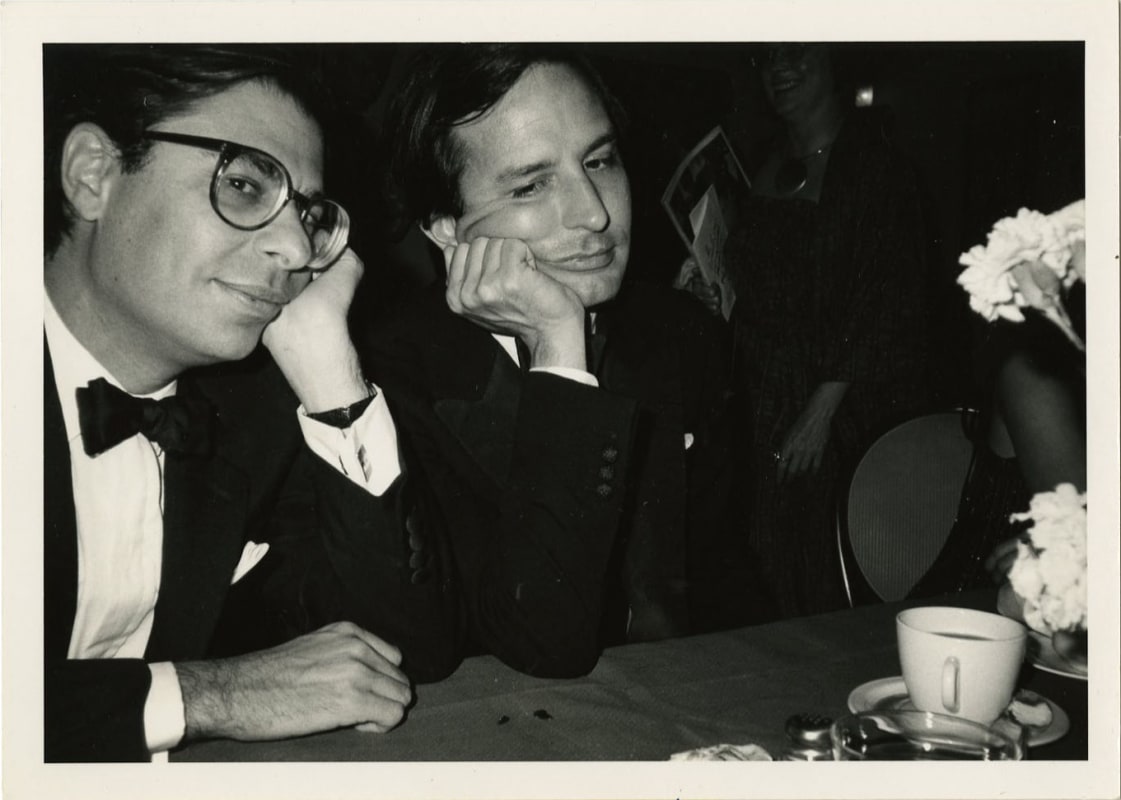The Glamorous 1970s and ’80s Are Spotlighted in Bob Colacello’s New London Exhibition Caroline Roux
If you ever get the chance to talk to Bob Colacello, then grab it—and ideally record it. He is a storyteller of the very first order, a master of both indiscretion and charm. Once editor-in-chief of Andy Warhol’s Interview magazine, and then a mainstay of Vanity Fair in its golden Tina Brown and Graydon Carter years, Colacello has seen it, heard it, and done it all. He’s written biographies of the Reagans and Warhol and profiled everyone from Prince Charles to Balthus and Rudolf Nureyev, and he’s got the anecdote to prove it.
Between 1976 and 1983, Colacello had a camera too, a tiny little Minax 35EL, so discreet it was the favorite of Cold War spies. And he has a trove of pictures to prove that. Now, the fruits of those years are ours to see—hundreds of photographs of celebrities, politicians, aristocrats, and fashion gods, often in the same room, from Studio 54 to Halston’s house via the White House. “In Studio 54, you’d see Moshe Dayan in his eye patch chatting up Iman,” says Colacello, who also snapped Greg Allman and Cher in full smooch at Jimmy Carter’s inauguration dinner.
Originally presented in Madrid during COVID—“a huge show that nobody saw,” says Colacello—the exhibition “It Just Happened, Photographs 1976-1982” was picked up by the gallerist Thaddaeus Ropac, who has brought it to London after an installation in Paris. “I didn’t make any selections,” says Colacello of the material, which covers the gallery walls in a funky salon hang, on view through July 29. “I just turned up in both cities and said ‘I love it!’”
In London he gave a sell-out tour and talk. “The 1970s have become a mythical era,” he says. “People are just obsessed and fascinated. I guess it was after Nixon left and the war ended and there was no reason to protest anymore, and we all said ‘Let’s go dancing!’”
At that time, he says, sex was always in the air. “We were in our 20s, the pill had been invented, it was pre-AIDS, and even if you weren’t promiscuous, you felt like you could be,” says Colacello. “At The Factory, over which Andy presided, it didn’t matter who or what you were. It was boys kissing boys and girls kissing girls, but it wasn’t cool to go on about your private life. You just did it.”
Meanwhile, Colacello knew everyone, and they trusted him. “I’ve always had the ability to get on with people,” he says. “And that’s why these pictures are rare. I was on the inside and the outside, taking pictures that no one else could. No one has a picture of Andy eating a room service breakfast in his hotel in Naples, wearing his jockey shorts.” His style was urgent and immediate: Henry Kissinger holding forth at a Georgetown cocktail party is all but blotted out by an extra-large hairdo and Diana Vreeland’s face is obscured by a gesticulating hand. Mick Jagger, Jerry Hall, and John Paul Getty III are huddled in a taxi or a stairway, features blanked by a blistering flash.
“I stopped taking pictures when I left The Factory,” recalls Colacello, whose book New York Memories (Ivorypress) will be out this September. “When I went to Vanity Fair, I decided to be a serious journalist, and anyway, they had Annie Leibovitz to do the portraits.”
Now 76, Colacello is editor-at-large on Airmail, Graydon Carter’s lively online publication, and a senior advisor at Vito Schnabel, for whom he has curated a couple of shows. (He has his own plate portrait by Julian Schnabel.) He keeps an apartment in the city, but is a resident of Southampton, New York. “I should be writing my second Reagan book, but I have a summer job, at Peter Marino’s art foundation. It’s an 1890s building, and he’s restored it so beautifully. He’s showing 12 works by Baselitz this summer."
Colacello’s role is compèring Brunch with Bob every Saturday morning, where he interviews an artist who has work in Marino’s collection. “Vik Muniz came all the way from Brazil to do it,” he says. “He’d read my ‘Out’ column in Interview and always dreamt that one day he’d be mentioned in it.” On July 15, he will be talking to the Israeli artist Michal Rovner.
Just this month, Colacello picked up his first iPhone. “I’m the ultimate luddite, but my flip phone stopped working abroad,” he says. Whether he will resist the lure of its in-built camera remains to be seen. But let’s hope not.

























































































































































































